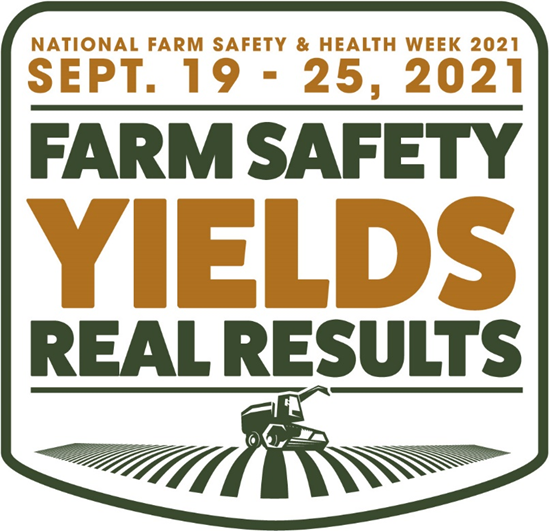
Fall harvest time can be one of the busiest and most dangerous seasons of the year for the agricultural industry. For this reason, September 19-25, 2021 is being recognized as National Farm Safety & Health Week, which has been observed the third week of September since 1944, when President Roosevelt proclaimed the first event. Ed Sheldon, program manager for INPrep (Indiana Prepared), recently shared the following information.
The theme of this year’s National Farm Safety and Health Week is “Farm Safety Yields Real Results”.
As you know, farming remains one of the most hazardous jobs in America, with a fatality rate many times higher than the average for all other occupations. In addition, research indicates that at least one in every nine farm families will experience a farm injury requiring medical treatment each year, some of which result in permanent disability.
In conjunction with National Farm Safety & Health Week, the Purdue Agricultural Safety & Health Program just released the “2020 Indiana Farm Fatality Summary with Historical Overview.” The program has been monitoring farm-related fatalities in the state for nearly sixty years and publishes the summary annually to keep the public aware that agricultural production is still one of the most hazardous occupations in the state and U.S.
During 2020, at least 25 people died in farm-related incidents throughout the state. The 25 fatalities were well below the fifty-year average of 30.2 fatalities per year, but represent an increase over 2019’s 21 documented deaths. Two victims were under 18 years of age, while 13 were over age of 60. While the declining average number of fatalities is encouraging, we should never become complacent.
Over the past 41 years, at least 1,115 people have died from farm-related incidents in the state, including at least 12 in Whitley County.
Elkhart and LaGrange counties, home to the largest Amish/Old Order communities in the state, have experienced more farm fatalities than any other.
So, let’s all keep safety in mind during harvest season. Modern farm vehicles have more safety equipment than previous models, including better lighting, but the individual vehicles are much larger and pose a greater danger in a collision. Keep in mind that farmers cannot always safely pull over to let others pass, due to road signs, side ditches, the physical nature of what they are transporting, and other hazards. Trucks and other grain hauling equipment may have to be parked temporarily on county roads, and extra care should be taken when passing these areas.
Slow Moving Vehicle (SMV) emblems are displayed on farm equipment and other vehicles to alert drivers of their slow speeds. An SMV emblem is a triangle shape, with an orange fluorescent center and red reflective borders. Most equipment and other vehicles displaying this emblem are capable of speeds no faster than 25 miles per hour.
For additional details about Indiana farm injuries and deaths, click on the “NEWS” tab at www.inprepared.org to download a copy.
For more information about National Farm Safety and Health Week, including educational materials and details about daily webinars covering a variety of safety and health related topics, please visit: www.necasag.org/nationalfarmsafetyandhealthweek. Also, visit www.inprepared.org or https://www.facebook.com/INPREPared for additional resources.